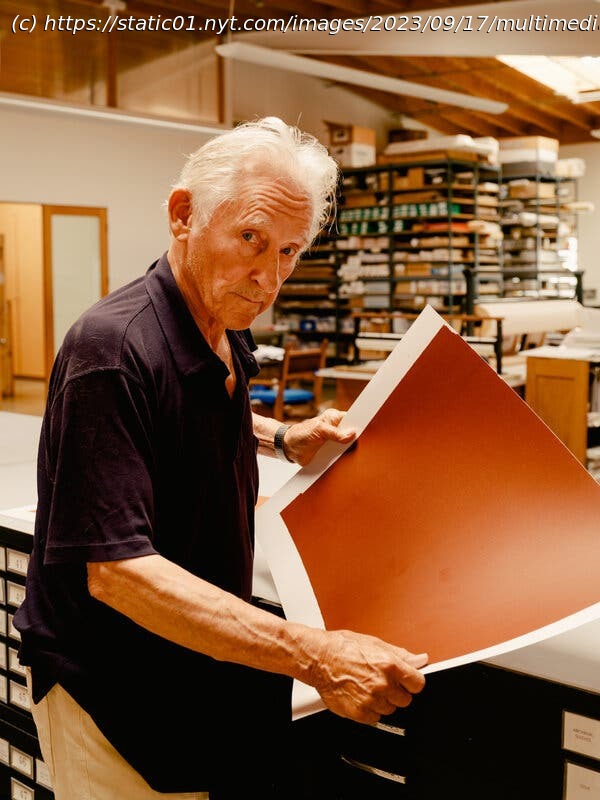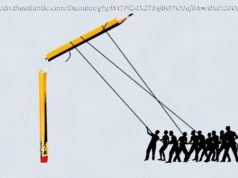“I was a little bit tired of making conventional pictures”: The artist on recreating his bittersweet installation, first seen in 1970, for the Museum of Modern Art.
A rich perfume wafts through the sixth floor of the Museum of Modern Art, where the installation of Ed Ruscha’s full-dress survey “Now Then” is underway. You sense it before you see it: a room where the white walls are turning velvety brown. A chocolate room.
The McPherson family, dressed in their La Paloma Fine Arts company T-shirts, bustle around their rig. Edan McPherson dips a long squeegee into a pool of melted chocolate, draws the rubber blade across the coarse mesh. His son, Daniel, whisks the prints away, while his sister Robyn feeds fresh paper. His wife, Lynda, and daughter, Kayla, monitor double boilers of chocolate in reserve. The drying racks fill up, two tenths of a pound of dark chocolate coating each sheet. When the chocolate sets, they’ll trim and hang each print, floor to ceiling, like shingles on a Craftsman house.
“Chocolate Room” is an oddity in Ruscha’s influential oeuvre. Of the 85-year-old Nebraska native’s hundreds of projects — paintings, prints, and photo books; dry eulogies of Americana like SPAM cans and Mobil stations and two-lane blacktop — “Chocolate Room” is his only installation. It’s been shown just seven times since its creation in 1970, and never before in New York.
Yet for all that, “Chocolate Room” is a remarkable distillation of Ruscha’s sensibility: chalky humor, sweet gumption, American bleakness, an existentialism that rests on objects of pop culture, like common chocolate.
Christophe Cherix, MoMA’s chief curator of prints and drawings, called it “almost mythical. You read about it, you hear about the insects, the smell.”
“Chocolate Room” might have remained a legend, but in 1995 the curators Ann Goldstein and Anne Rorimer featured it in a survey of conceptual art at the Museum of Contemporary Art in Los Angeles. The museum acquired “Chocolate Room” in 2003.
“I do think we surprised Ed with our proposal to remake the work,” Goldstein, now the deputy director of modern and contemporary art at the Art Institute in Chicago, said over email. They saw the piece as “a union of painting and conceptual art.”
Cherix agrees. In the MoMA show’s floor plan, “Chocolate Room” is crucial, connecting Ruscha’s 1960s pop-art paintings and conceptual books to his prints and drawings in unusual materials like gunpowder and tobacco. Like taste, “Language comes from the mouth,” pointed out Michael Govan, director of Los Angeles County Museum of Art, where the show travels next and where “Chocolate Room” will be remade again. He said “Chocolate Room” was the first piece he and Cherix chose.
For his part, Ruscha seems charmed by the resonance of that wholesome, elegant gesture — wallpaper a room with chocolate. “It’s locked into itself,” he told me. “I’m not sure where it took me, I’m not sure I learned anything from it.






